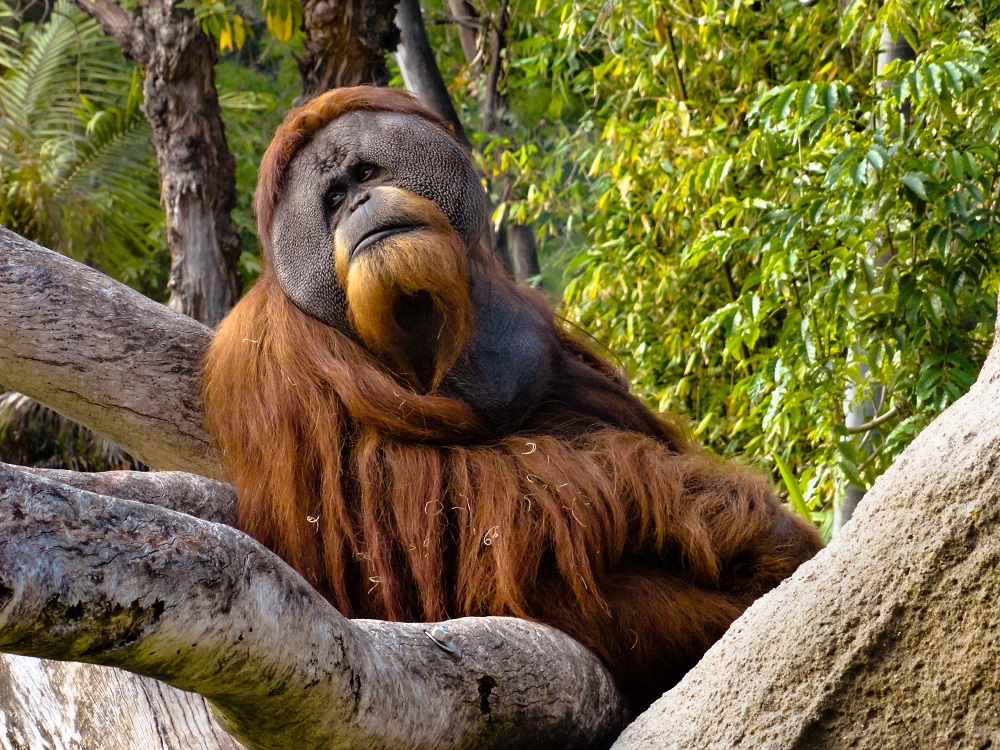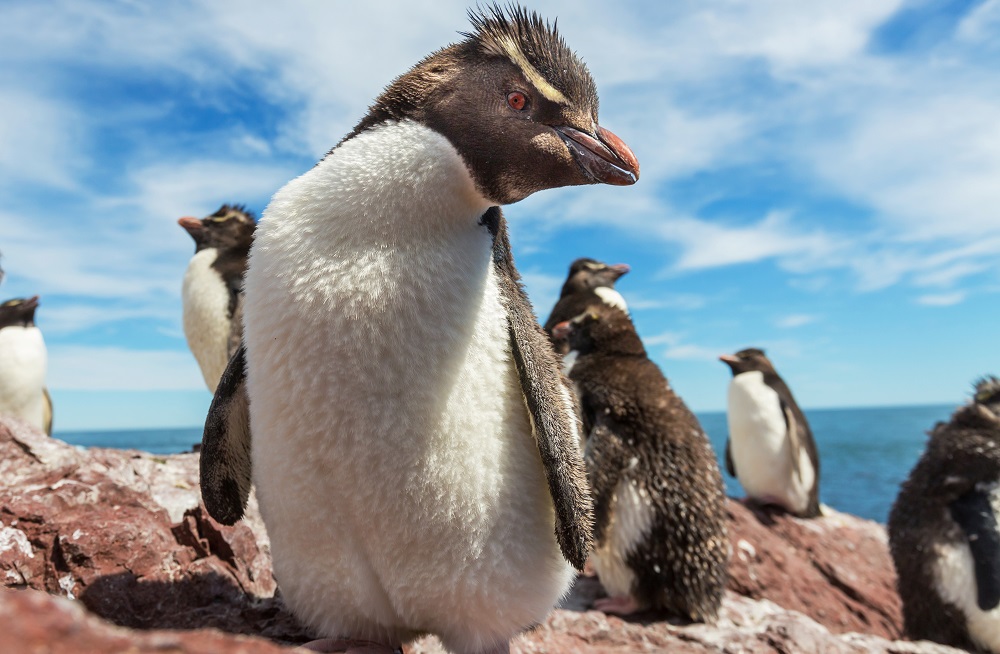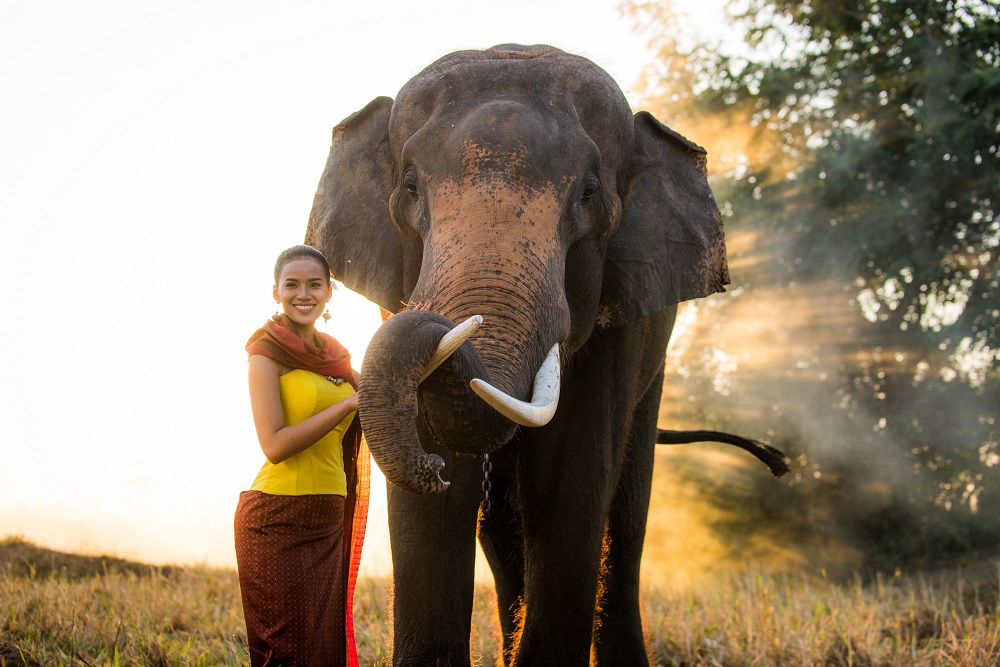Once they’re gone, there will be only pictures of them! These are some of the endangered species worldwide:
The adorable Dodo bird, the West African Black Rhino, the Golden Toad, the Carolina Parakeet, the Caspian tiger, and the Passenger pigeon are just a few of the animals that went extinct in the past decade.
Unfortunately, human behavior will lead to many animals disappearing from our world and future generations won’t get to experience these amazing creatures. Over 3,000 animal species are currently listed as endangered. Despite the 1973 passage of the Endangered Species Act to aid conservation efforts, the number of endangered species in the United States has increased threefold in the past decade.
In the following lines, I will talk a bit about some critically endangered species worldwide that we will miss when they’re gone…

Orangutan
It may seem surprising, but among all the critically endangered species is also the orangutan. Orangutans, the largest tree-dwelling mammals, are easily recognized due to their characteristic red fur and spend the majority of their time in trees.
They can move through the branches thanks to their long, strong arms and their hands and feet that can grasp. Even their name means man of the forest in the Malay language. These great apes are extremely intelligent animals that have 96.4% of our genes.
Presented as social creatures in many wildlife documentaries streamed on TV, in reality, the orangutans live in solitary existences. Orangutans come in two varieties: Sumatran and Bornean. Their looks and behavior differ slightly. Sumatran orangutans have longer facial hair than other orangutans, despite having shaggy reddish fur. Compared to their Bornean cousins, Sumatran orangutans are said to have stronger social ties. It is more probable for Bornean orangutans to move on the ground after going down from the trees.
There are only 800 orangutans in the world, making them one of the most endangered species.
Red panda
I love pandas so much; it makes me so sad to know they’re among the endangered species. Besides being so cute and sociable with humans, what else do you know about these fellows? Mostly found in trees of the Eastern Himalayas, red pandas are incredibly talented and acrobatic creatures. In winter, they wrap themselves for warmth and use their long, bushy tails for balance.
The name “panda,” which refers to an animal that primarily eats plants, is reportedly derived from the Nepali word “ponya,” which means bamboo.
Fun fact: To grasp bamboo, they have appendages that resemble thumbs.
Amur Leopard
Although most people associate leopards with the savannas of Africa, a rare subspecies of the species has adapted to live in the temperate forests that comprise the northernmost portion of its range in the Russian Far East.
How is the Amur leopard different compared to the one that lives in the warm climate? The Amur leopard can run up to 37 miles per hour, just like other leopards. This species prefers to live alone, and I suspect that’s due to their incredible skills of hiding their prey to not be found by other wild animals. Smart! Unfortunately, they’re among the critically endangered species worldwide and we might not have a better chance than now to spot them in their natural habitat.
Black rhinos
These poor animals have been hunted down for their horns for ages, and because of that, there are now around 6,421 black rhinos left on the entire continent. The illegal hunting of rhinos for the illicit international market for their horns is one example of wildlife theft that continues to harm the species and jeopardize its recovery.
Black rhinos eat leaves from trees and bushes thanks to their pointed lips. Throughout their lives, the rhino’s two horns (which resemble human fingernails) continuously grow from the skin at their base. With an average length of about 19 inches, the front horn is longer than the rear horn.
Vaquita
Who knows what a vaquita looks like? For those who have never heard of this marine mammal before, I will tell you a few things about it. They were not discovered until 1958, and right now, there are 10 vaquitas left in the world, and they live in the waters of Mexico. Illegal fishing operations frequently use fishing nets in marine protected areas in the Gulf of California, Mexico, where vaquita is caught and drowned.
Before Googling to see what a Vaquita looks like, let me describe it for you so you can test your imagination. The vaquita has dark patches on its lips that run in a thin line from the mouth to the pectoral fins and a large dark ring around its eyes. It has a dark gray dorsal surface, pale gray sides, and a white underside with long, light gray lines on the ventral surface.
Indus River Dolphin
Compared to other dolphins, these look a little bit ancient, which is not surprising when you know that they have been discovered to have originated in the ancient Tethys Sea. Dolphins had to adapt to their only remaining habitat—rivers—when the sea dried up about 50 million years ago. They are now restricted to the lower Indus River in Pakistan and the River Beas, an Indus River tributary in Punjab, India.
The majority of dolphins are restricted to a 750-mile section of the river and are separated into isolated populations by six barrages. In Pakistan, their numbers drastically decreased following the installation of an irrigation system. Unfortunately, there are only 1,816 Indus river dolphins left in the world today, making them an endangered species.

Galápagos Penguin
For me, it’s hard to accept that among all the endangered species, the Galápagos penguin is one of them. Climate change, bycatch, and pollution are the main threats to penguins. Strong El Niño events in the past have resulted in dramatic declines in prey species and decreased breeding success, with mortality rates reaching up to 77 percent.
At this moment, there are around 2000 Galápagos penguins in the world. They are very welcoming to human visitors who are nice to them and preferably watch without trying to touch them. These adorable penguins live in small families, and only during the day do the penguins search for food in the ocean before returning to the islands, where they can be seen swimming, playing, interacting with others, feeding their young, eating, or relaxing.
It is also interesting to point out that the Galápagos penguin is the smallest in the world. So cute!
Fun fact: The Galápagos penguin doesn’t sweat.
Polar Bear
It breaks my heart to see that polar bears are also among the endangered species, and in this case, it is solely because of human beings. In the United States, there are two subpopulations of polar bears in Alaska.
In May 2008, polar bears were listed as a threatened species in the United States under the Endangered Species Act due to the ongoing and possible loss of their sea ice habitat caused by climate change, which is the main threat to polar bears throughout the Arctic.
The polar bears are spending more time on land, where they are frequently drawn to urban areas, as their sea ice habitat recedes earlier in the spring and forms later in the fall. Scientists say that because of the rapidly changing climate, polar bears might go extinct in a few decades, mostly because they will run out of places to hunt and breed.
Fun fact: On a brighter note, for those who don’t know, polar bears have black skin and a blue tongue.
Monarch butterfly
Among all these endangered species, there are also a couple of insects worth mentioning. If you’re from America or Canada, certainly you have spotted at least once in your life a cute monarch butterfly. Same as some birds, these butterflies have a huge migratory itinerary, traveling annually between 1,200 and 2,800 miles from the US to Southeast Canada and Mexico. From November to March, they’re traveling towards warmer climates to hibernate.
Due to climate changes, the monarch’s favorite plant in which they lay their eggs, the milkweed, almost disappeared. You can try growing milkweed in places that are suitable for these insects, such as the eastern United States, the easternmost prairie states, and southern Canada from New Brunswick to Saskatchewan if you want to increase the lifespan of Monarch butterflies.
Poison Dart Frog
Cute-looking and lively-colored, the poison dart frog lives in the wild and takes advantage of its skin as a warning sign: “Hey guys, don’t eat me! I am poisonous.” A deadly poison secreted by the frog’s skin can paralyze and even kill predators. According to research, there are around 100 species of poison dart frogs, including those found in the Amazon, and their survival is threatened by habitat loss and climate change.
Tree Kangaroo
Kangaroos are already cute (when you don’t live in Australia and you don’t spot one knocking at your door!), but have you ever seen a tree kangaroo? Unfortunately, the majority of tree kangaroo species are declining in number, and many are extremely rare. These creatures show an intriguing divergence in the evolution of the marsupial family known as macropods, which includes wallabies and kangaroos.

Sri Lankan Elephant
Elephants are so cute, yet they are among the endangered species. The largest and darkest subspecies of Asian elephants is the Sri Lankan subspecies, which has patches of depigmentation—areas of skin without color—on its face, ears, trunk, and belly.
These elephants were once widespread on the tear-shaped island at the southernmost tip of India, but as forests are cleared for development, their ancient migratory routes are being disrupted, forcing them into smaller areas. Today, there are around 2,500–4,000 Sri Lankan elephants protected by law, and hunting them is absolutely prohibited.
… psst! Saving endangered species of animals isn’t exactly easy, but if we all contribute to taking better care of our environment, it might help quite a lot. You want to do something about that matter, but you don’t know where to start? This useful guide, Save Our Species: Endangered Animals and How You Can Save Them, will teach you how you can contribute on a local, national, and individual level, whether your goal is to dig a hedgehog tunnel, build a bird box, or establish more extensive environmental changes in your community. It’s available on Amazon at the price of $17 for the hardcover edition.
Fun fact: Elephants are the only mammals in the world that can’t jump at all!
Hawksbill Turtle
Another critically endangered species is the Hawksbill Turtle. And this is a reminder of how we human beings can bring so much destruction to the world, especially to wildlife. Do you know all those pictures of seahorses who are trapped in plastic bags or turtles with pieces of dental floss over their necks? This is what happened to the Hawksbill Turtle. Due to pollution and climate change, but also coastal development, we might not see them around very long.
Hawksbills are primarily found in coral reefs in tropical oceans around the world. Although they also consume sea anemones and jellyfish, their primary food source is sponges, which they retrieve from reef crevices with their narrow, pointed beaks.
Sea turtles are the living representatives of a group of reptiles that have roamed our oceans for the past 100 million years. They are an essential component of marine ecosystems and support the well-being of seagrass beds and coral reefs.
Yangtze Finless Porpoise
Being the sole extant freshwater porpoise in the world, the Yangtze Finless Porpoise is the odd one out of its family. Currently found in China’s Yangtze River, this aquatic mammal is classified as a critically endangered species.
Although humans should have taken care of it because it plays a crucial role in the ecosystem, their home is suffering from years of water pollution, overfishing, and environmental degradation in the area.
Finless porpoises were given the highest level of protection possible in China in 2021 when they were upgraded to “first-level protected species.” According to recent statistics from 2023, there were still about 1,249 of them living in the wild.
Cross River Gorilla
It has only been in the last ten or so years that researchers have been able to fully investigate the Cross River gorilla’s distribution and abundance. Many of these gorillas have been difficult for scientists to directly count because they live in rough terrain and are apprehensive of humans.
Rather, there are only roughly 200 to 300 of these gorillas remaining in the wild, according to researchers who have used indirect indicators like nest counts and estimated range sizes. Protecting the forests where the Cross River Gorillas live is the main goal of conservation efforts.
Mountain Gorilla
Another critically endangered gorilla is the mountain gorilla. The species is found in two isolated populations in the high-altitude forests in the mountainous, volcanic areas of Rwanda, Uganda, and the Democratic Republic of Congo, as well as in the Ugandan Bwindi Impenetrable National Park.
Political unpredictability and extreme poverty have long existed in the Virunga landscape. Due to human migration for food, shelter, and space, more than 500,000 people currently reside close to mountain gorilla habitat, posing a serious threat to the population of these great apes.
There are currently just over 1,000 mountain gorillas in the wild, making them an endangered species. Nonetheless, there are still plenty of threats that could impede this species’ ability to recover.
Sumatran tiger
At 308 pounds, the Sunda Island tiger, also known as the Sumatran tiger, is the tiniest tiger subspecies worldwide. For comparison, the Amur region’s tigers are the largest of all the big cats, with males weighing up to twice as much as those found on Sunda Island. They are also extremely rare; only the Indonesian island of Sumatra is home to them, with an estimated 600 remaining in the wild.
Southeast Asia’s population has nearly doubled since the 1980s, from 357 million to approximately 668 million in 2020. And because of this, the number of tigers has been declining along with their habitats. Sunda Island tigers are more likely to come into contact with people as human settlements grow in the area, which could increase human-tiger conflict. Serious threats to tiger survival include hunting and the illicit trade for their meat and fur.
Even though you, I, and perhaps a hundred other people want these pointless hunts to end and these poor animals to be left alone, there isn’t much we can do about it other than make a small (or large) donation to the cause. Every donation helps save these endangered species and build a peaceful future in which we can coexist! Organizations like IUCN, Defenders of Wildlife, African Wildlife Foundation, WWF, and Charles Darwin Foundation are among the best places that aren’t scammers and to which you can donate safely, knowing that your money will go where they’re needed the most!
Are you eager to dive into the wildlife for more interesting facts? Here’s another article you may enjoy reading: Discover the World’s Tiniest Monkey Breeds.












